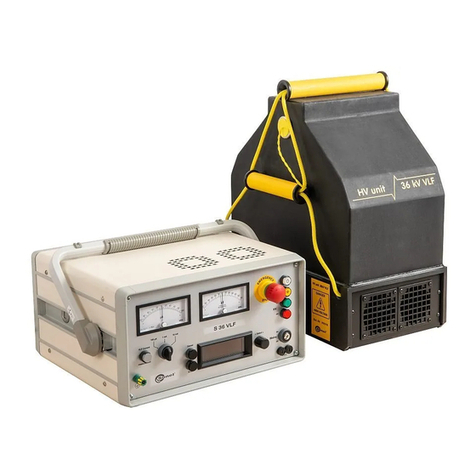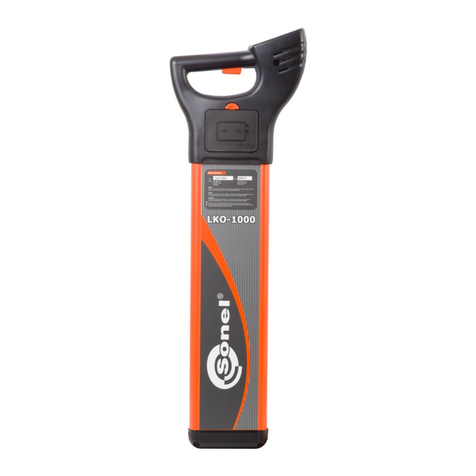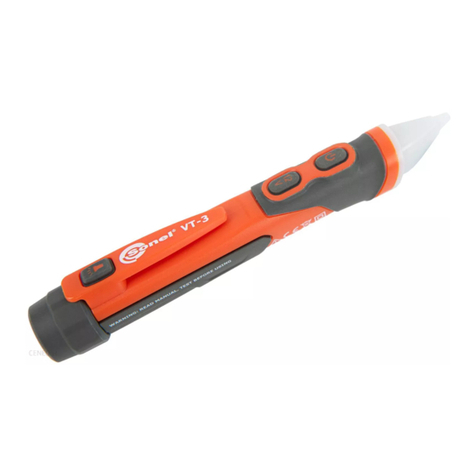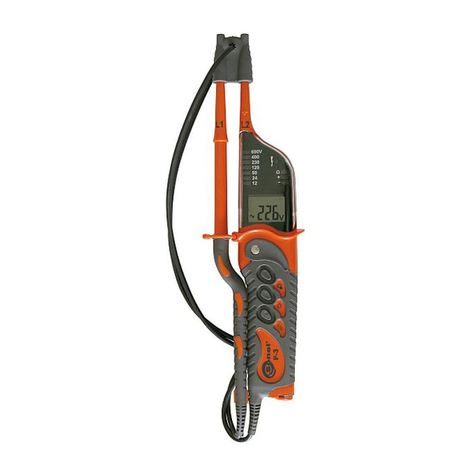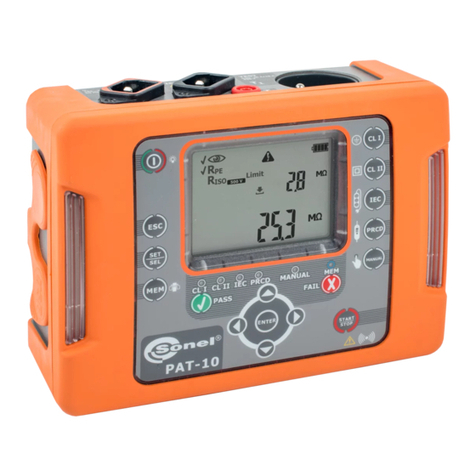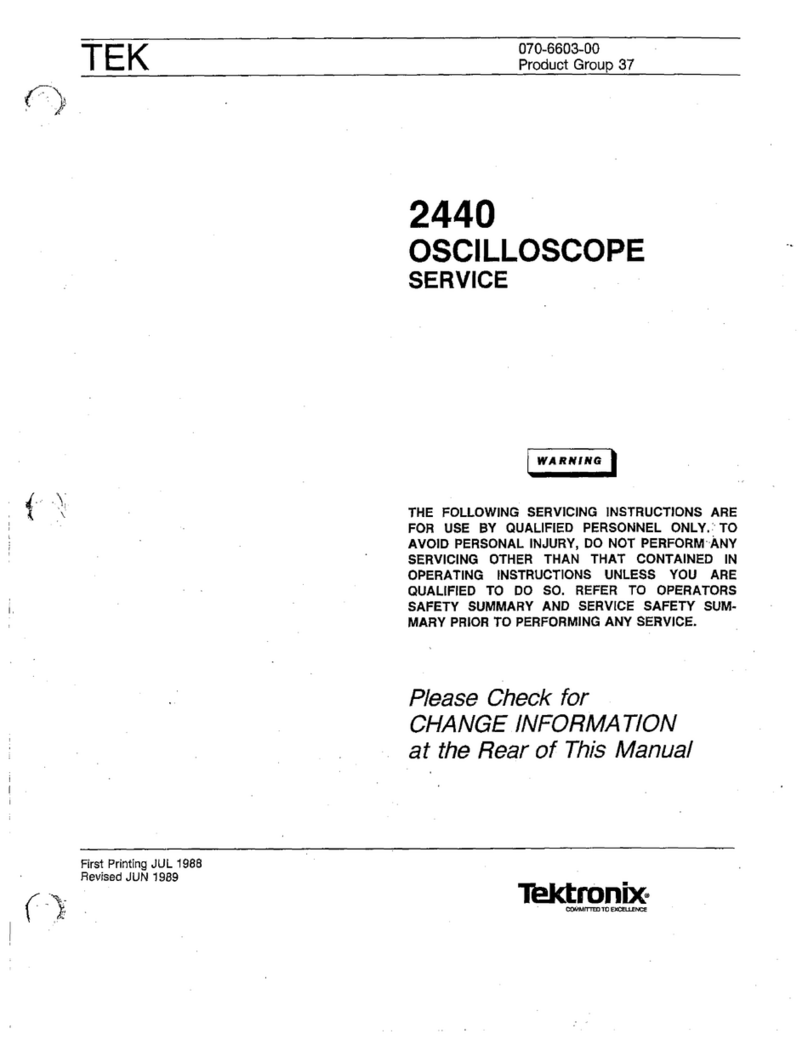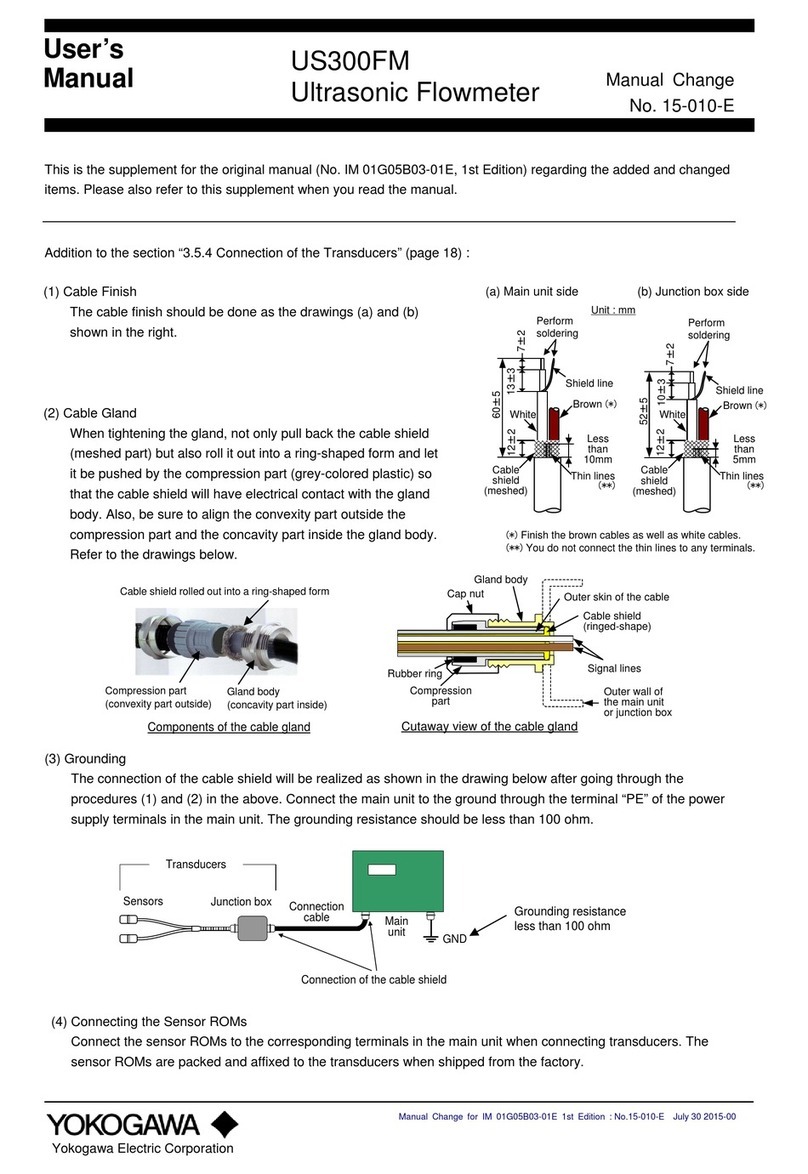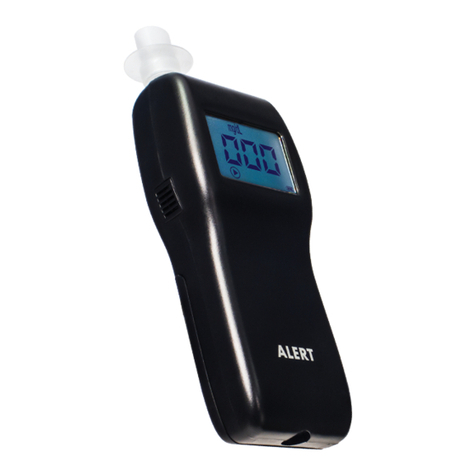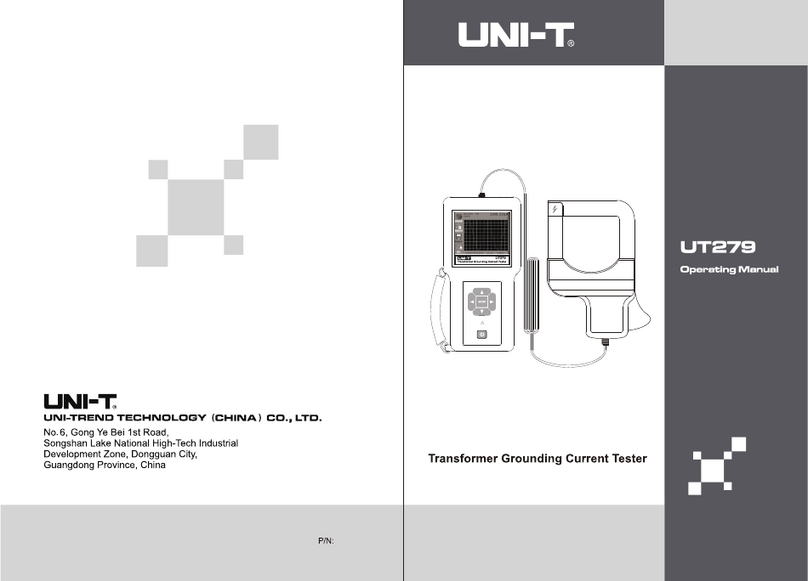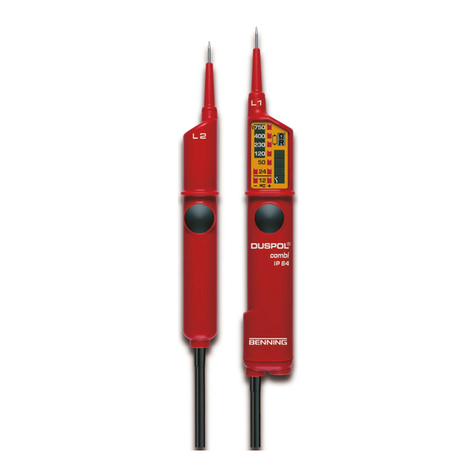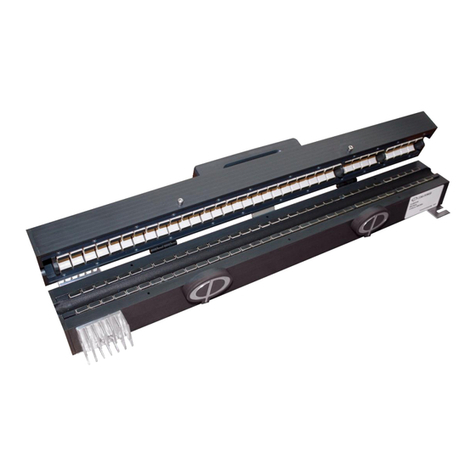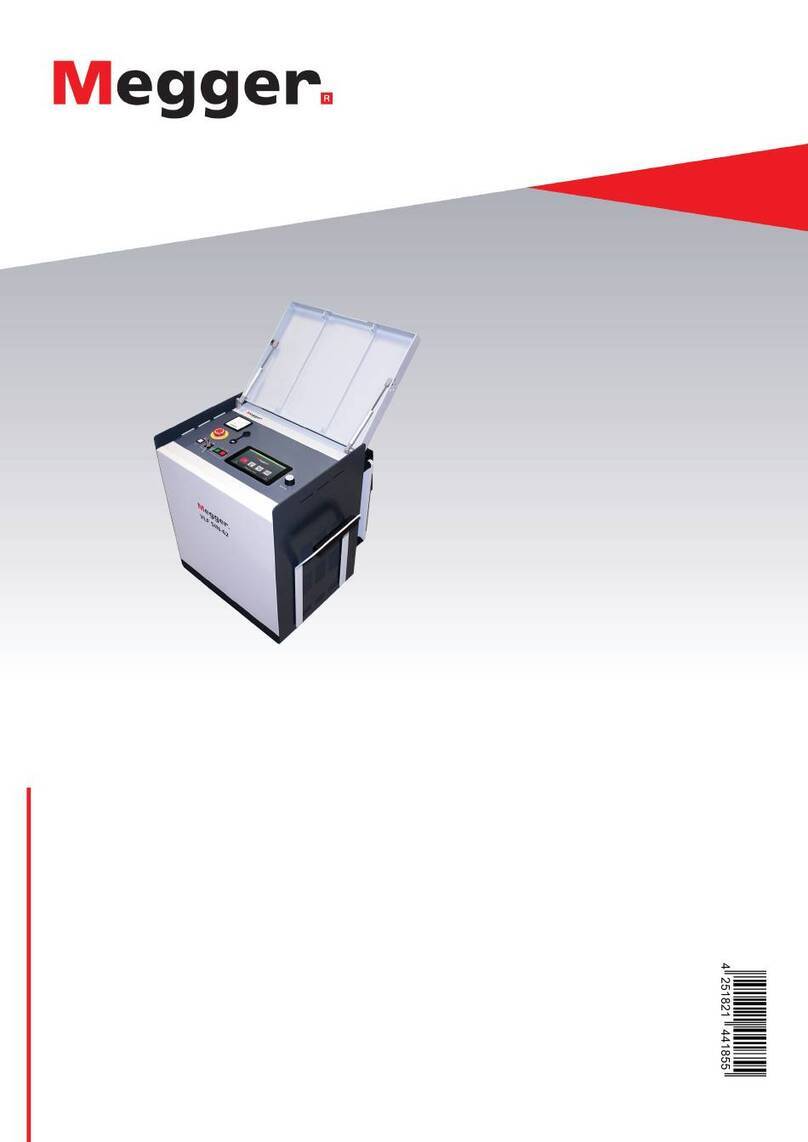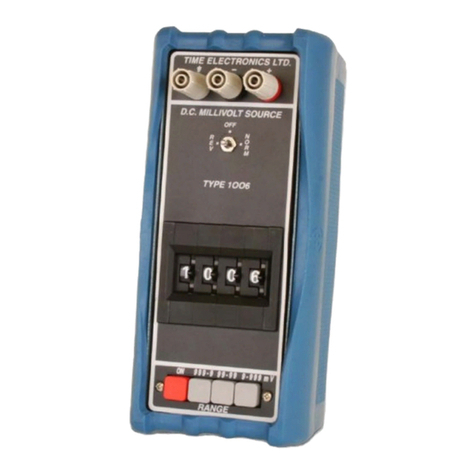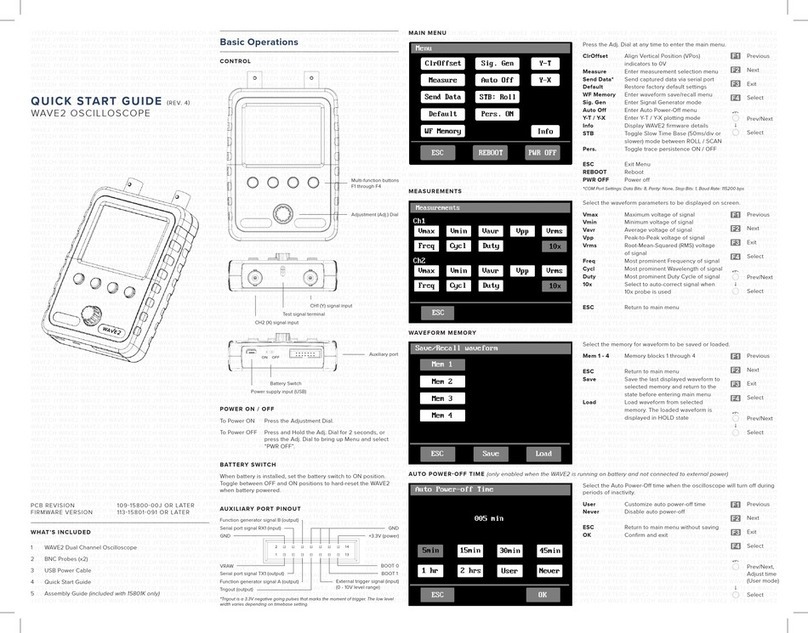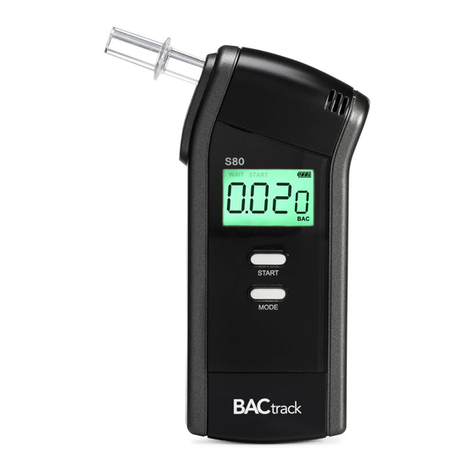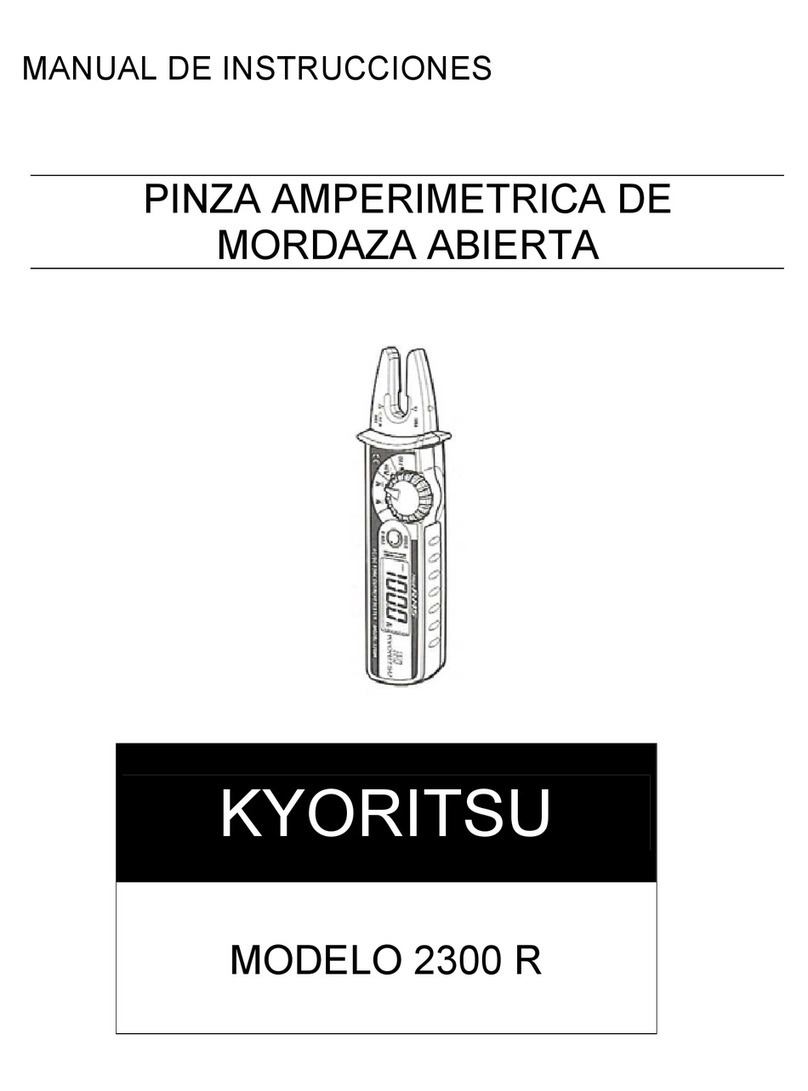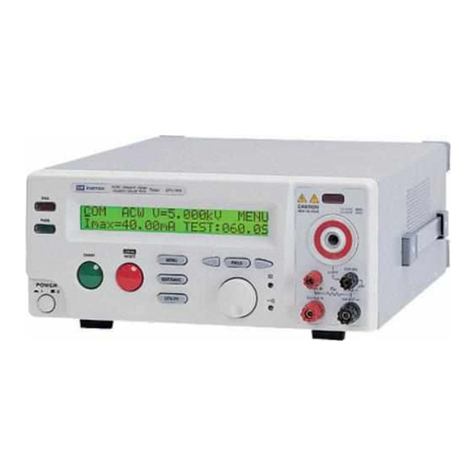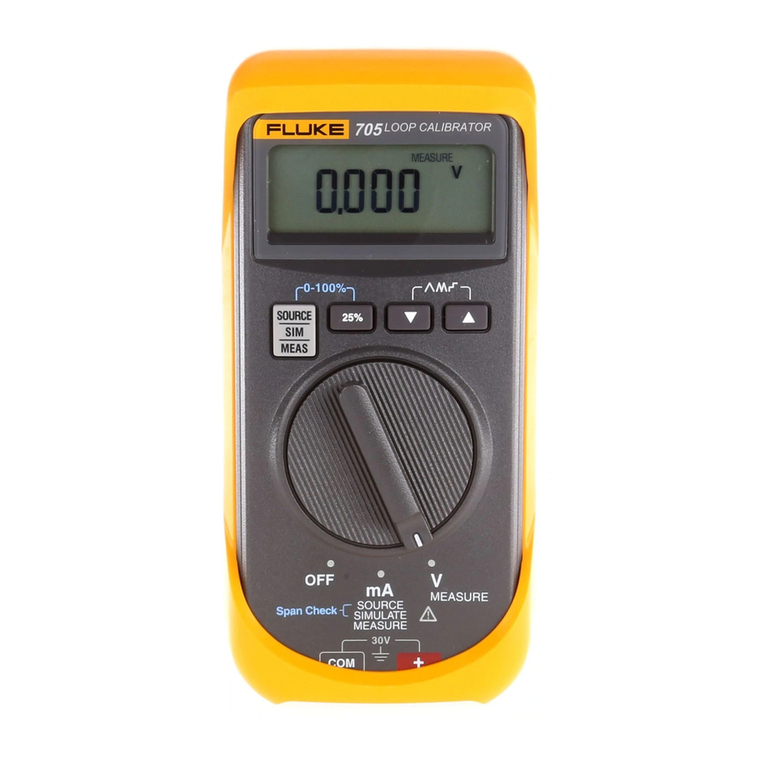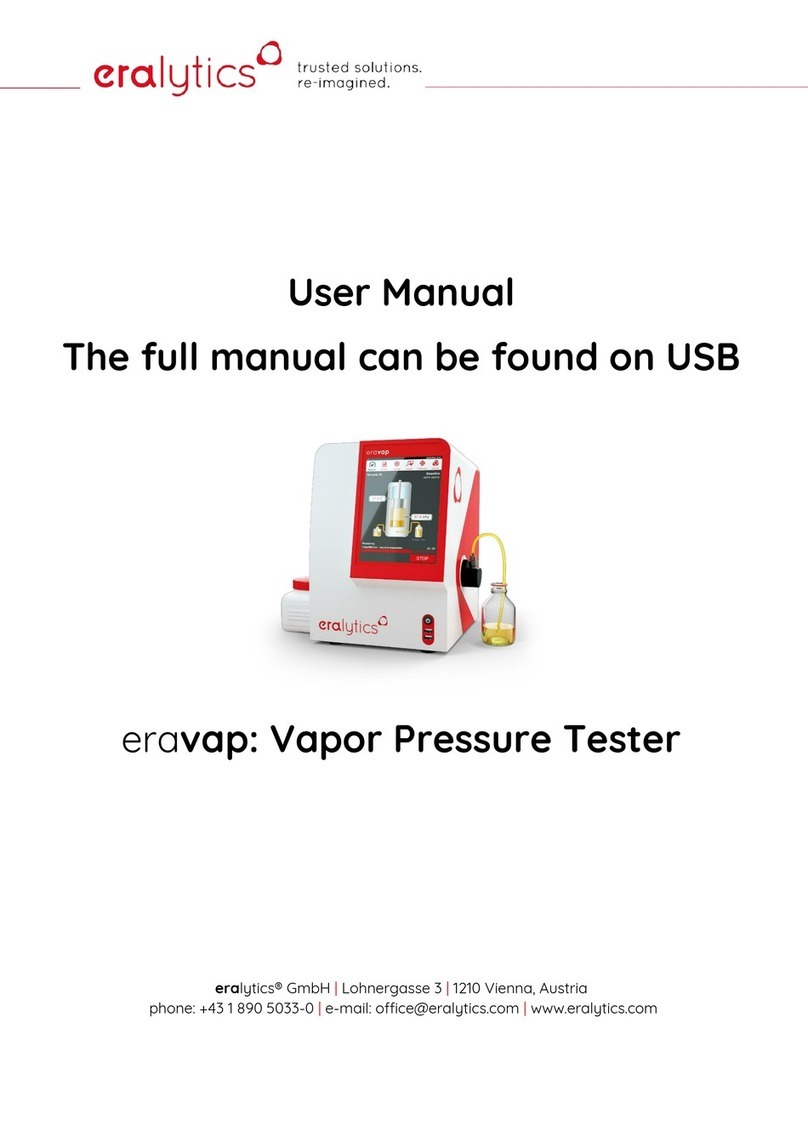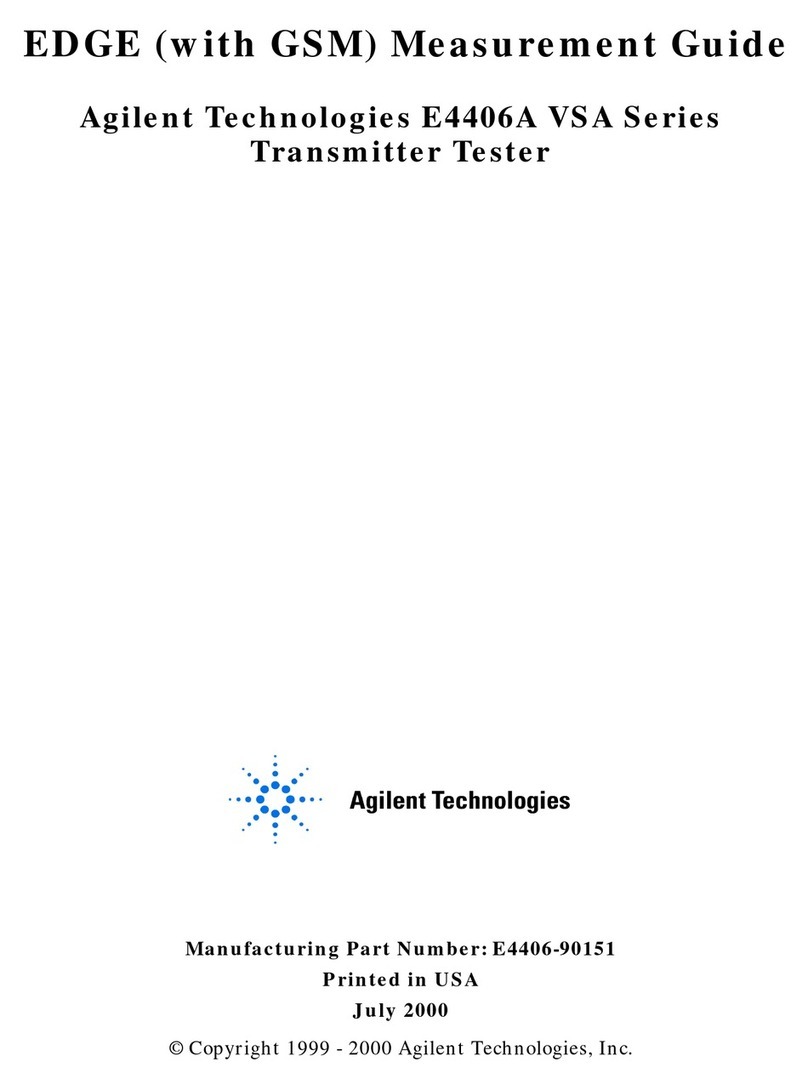Sonel TKF-13 Installation manual



OPERATING MANUAL
PHASE SEQUENCE AND
MOTOR ROTATION
DIRECTION TESTER
TKF-13
v1.5 07.07.2011

2
Table of contents
1. Safety measures......................................................................2
2. Phase spin direction test..........................................................3
3. Motor shaft spin direction (using leads).................................... 4
4. Motor shaft spin direction (connectionless). ............................. 5
5. Power supply turn-off...............................................................6
6. Low battery signalling..............................................................7
7. Replacement of batteries.........................................................7
8. Cleaning and maintenance......................................................7
9. Storage.................................................................................... 7
10. Dismantling and utilization.....................................................8
11. Technical data.......................................................................8
12. Technical data.......................................................................8
13. Manufacturer .........................................................................9
We appreciate your having purchased our phase sequence and
motor rotation direction tester. The TKF-13 tester is a modern high-
quality, simple and safe device. However it is recommended to get
acquainted with the present manual in order to avoid measuring
errors and prevent possible problems related to operation of the
meter.
Note:
The producer reserves the right to modify the appearance,
equipment and technical data of the device.
1. Safety measures
The TKF-13 tester complies with the safety requirements
specified in the norm EN 61010-1.
In order to protect yourself and the device do observe the rules
described in the present manual.
Warning:
•Do not perform tests in a humid environment, which contains
explosive or inflammable gases (materials), water vapour or
dust.
•Having carried the device from a cold environment to a warm
one, wait 0.5 hour before you proceed to perform

3
measurements for the purpose of acclimatisation, if necessary
wipe out the condensed water vapour.
•During measurements do not touch the metal parts of the
socket, lead terminals, fastening elements, circuits, etc.
•Make sure you are properly insulated from the tested object.
•Do not perform measurements using an out-of-order device,
whose casing or leads are damaged (broken, cracked,
deformed, contaminated, etc.).
•The TKF-13 tester may be operated exclusively by qualified
personnel who are properly authorised to perform work on
electric installations. Should the device be operated by
unauthorised personnel, the device may be damaged and
there may be a serious danger for the operator.
•The tester may be connected to the mains solely by means of
dedicated leads provided by the manufacturer. Solely such
leads guarantee compliance with safety regulations.
•If phase-to-phase voltage exceeding 760V AC will be
connected to the device, the tester may be damaged and there
may be a risk for the operator.
•If the device will be used for any other purpose than those
specified in the present operating manual, the tester may be
damaged and there may be a serious risk for the operator.
2. Phase spin direction test
•Press to turn the tester on. The green diode should go
ON signalling that the device is ready for operation.
•Connect measurement probes to the TKF-13 tester.
•Connect measurement probes to the points where there is the
expected three-phase voltage (see the illustration below).

4
•If the phases at the given
measurement points are
compliant with the L1, L2, L3
description, the R diode of the
tester will go on; otherwise
the L diode will go on.
•The light of the given neon
lamp (L1, L2, L3) signalises a
voltage exceeding 100V
between the corresponding
probe and one of the
remaining probes.
Note: Incorrect
indications of
the tester may
be caused by
one of the
following:
- connection of
two probes to one phase,
- connection of one of the probes to the neutral
lead,
- lack of connection of one of the probes to the
mains.
3. Motor shaft spin direction (using
leads).
•Disconnect the motor from the mains.
•Press to turn the tester on. The
green diode should go ON signalling that
the device is ready for operation.
•Connect measurement probes to the TKF-
13 tester.
•Connect measurement probes to the
tested motor (see the adjacent illustration).

5
•Rotate the motor shaft energetically in the desired direction.
•The light of the R diode means the connection to the U, V and
W motor terminals of phases L1, L2 and L3, respectively, will
cause rotation of the motor in the direction the shaft spun
during the test.
•The light of the L diode means the connection to the U, V and
W motor terminals of phases L1, L2 and L3, respectively, will
cause rotation of the motor in the opposite direction to the
direction the shaft spun during the test.
•Make sure the shaft rotates in the desired direction once the
motor has been connected to the power supply source
performing a phase sequence test (see Chapter 2).
4. Motor shaft spin direction
(connectionless).
•Press to turn the tester on.
The green diode should go ON
signalling that the device is ready
for operation.
•Put the rear part of the TKF-13
tester to a working motor along its
axis (the position of the axis in
accordance with the adjacent
illustration). The distance between
the tester and the motor should not
exceed 2-3cm.
•The light of the R diode means the
motor shaft spins clockwise. The
light of the L diode means the
motor shaft spins anticlockwise.
•Lack of indications (diodes L and R
are off) may mean the motor is not working or the signal is too
weak.
Note:
•In case of certain single-phase inductive motors, indications
may be hindered.

6
•The device has not been designed for the purpose of tests of
single-phase commutator motors.
•The device has not been designed for the purpose of tests of
motors powered through electronic power converters
(inverters).
Below there is a diagram illustrating the minimum motor
diameter for the given revolution and the frequency of the mains at
which the indications of the tester are reliable.
5. Power supply turn-off.
If within five minutes the L or R diode does not go on, the
tester is automatically turned off, and the ON diode goes off.
Note: It is not possible to turn the power supply off manually.
0
10
20
30
40
50
60
70
80
90
0
500
1000
1500
2000
2500
3000
3500
4000
rpm
minimum motor diameter [cm]
16.66 Hz
50Hz
60Hz

7
6. Battery charge signalling
•When the tester detects the battery charge amounts to 10% of
its full charge, the battery charge diode starts to blink
once a second. Measurements are still possible.
•If the battery is discharged, then the battery charge diode
is it continuously and it is impossible to perform
measurements. It is necessary to replace batteries. If the
battery is not replaced, then after five minutes the tester will be
automatically turned off.
7. Replacement of batteries
•Disconnect the measurement probes from the mains.
•Remove the elastic protection from the casing.
•Unscrew the rear part of the casing and remove it.
•Remove the battery from the tester and disconnect it.
•Connect a new battery, screw the rear flap and place the elastic
protection upon the casing.
8. Cleaning and maintenance
NOTE!
Use solely the maintenance techniques specified by
the manufacturer in the present operating manual.
The tester may be cleaned with a soft, damp cloth using all-
purpose detergents.
Do not use any solvents or cleaning agents which might scratch the
casing (powders, pastes, etc.).
The electronic system of the meter does not require maintenance.
9. Storage
In the case of storage of the device, the following
recommendations must be observed:
•Make sure the tester is dry.
•Should the tester be stored for a prolonged period of time, the
battery will be removed.

8
10. Dismantling and utilization
Worn-out electric and electronic equipment should be gathered
selectively, i.e. it must not be placed with waste of another kind.
Worn-out electronic equipment should be sent to a collection
point in accordance with the law of worn-out electric and electronic
equipment.
Before the equipment is sent to a collection point, do not
dismantle any elements.
Observe the local regulations concerning disposal of packages,
worn-out batteries and accumulators
11. Technical data
a) Kind of insulation: double, in accordance with EN 61010-1
b) Measurement category: III 600V in accordance with EN
61010-1
c) Ingress protection in accordance with EN 60529: IP42
d) Frequency range: 2 ÷ 70Hz
e) Nominal phase-to-phase voltage range: 127 ÷ 690VAC
f) Phase-to-phase working voltage range: 120 ÷ 760VAC
g) Motor voltage range: 1 ÷ 760V AC
h) Measurement current (per each phase): <3.5mA
i) Working temperature: -10 ÷ 45 ºC
j) Storage temperature: -20 ÷ 60 ºC
k) Battery charge diode blinking rate: approximately 1s
l) Time before automatic turn-off: approximately 5min
m) Tester power supply: alkaline battery 6LR61 (9V)
n) Dimensions: 130x72x31mm
o) Mass of the tester (with battery, without leads): ca 150g
12. Equipment
Standard:
•1,2m test leads (red, black and yellow) – 3 pcs,
•crocodile clip black K01,
•probe with banana plug (red, black and yellow) – 3 pcs,
•battery 9V – 1 pcs,
•operating manual.
Additional:
•crocodile clips red and yellow,

9
•case,
•three-phase adapter AGT-16P,
•three-phase adapter AGT-32P,
•three-phase adapter AGT-63P.
13. Manufacturer
The manufacturer of the device, which also provides guarantee
and post-guarantee service is the following company:
SONEL S.A.
ul. Wokulskiego 11
58-100 Świdnica
Poland
tel. +48 74 858 38 60
fax +48 74 858 38 09
E-mail: ex[email protected]
Web page: www.sonel.pl

Other manuals for TKF-13
1
Table of contents
Other Sonel Test Equipment manuals

Sonel
Sonel TKF-13 User manual
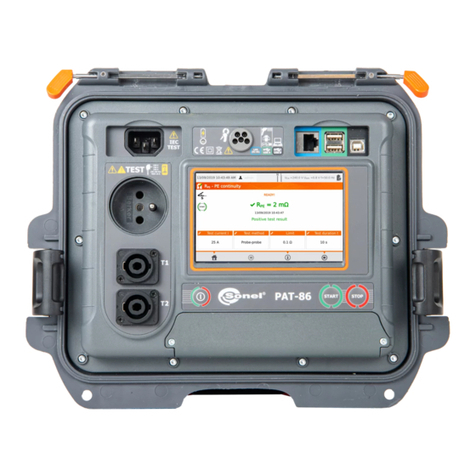
Sonel
Sonel PAT-80 User manual

Sonel
Sonel MRP-201 User manual
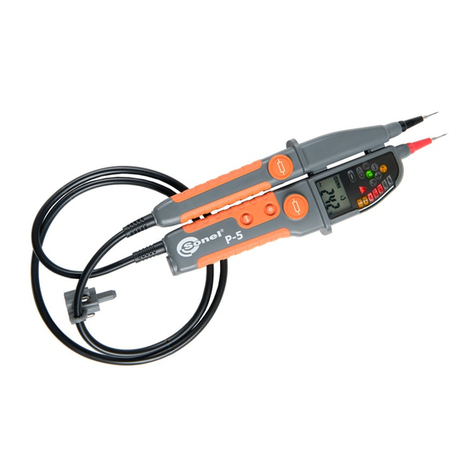
Sonel
Sonel P-4 User manual

Sonel
Sonel MIC-10s1 User manual
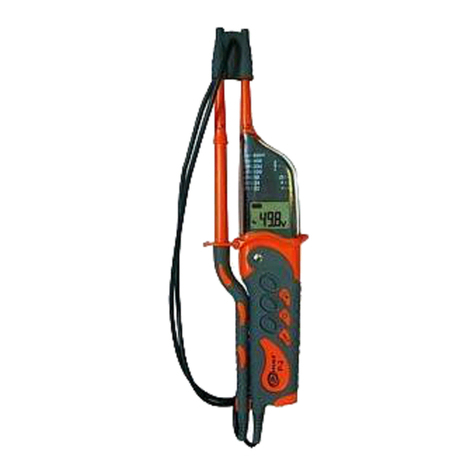
Sonel
Sonel P-2 User manual

Sonel
Sonel PAT-806 User manual
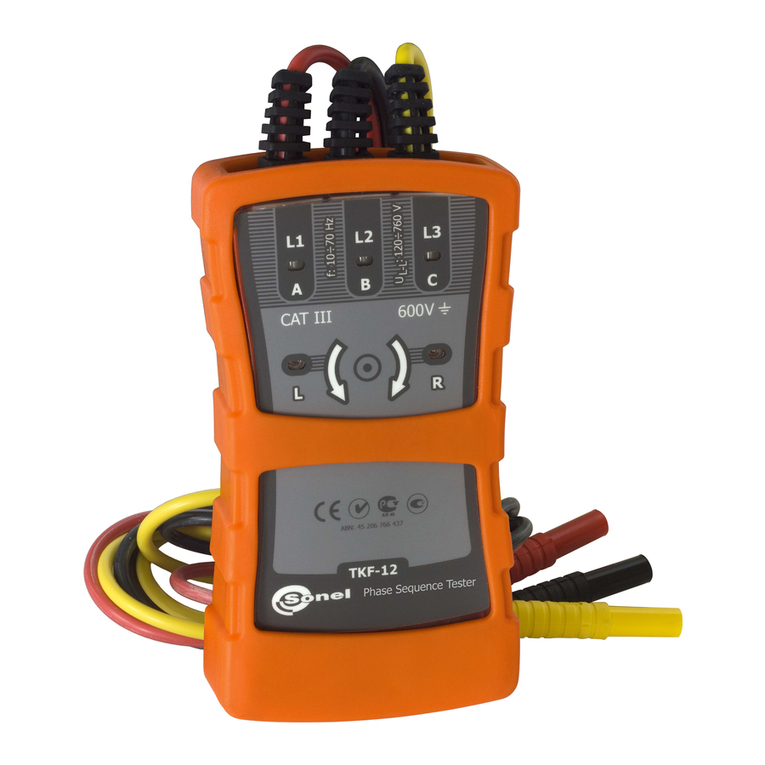
Sonel
Sonel TKF-12 User manual

Sonel
Sonel UV-260 Corona Camera User manual
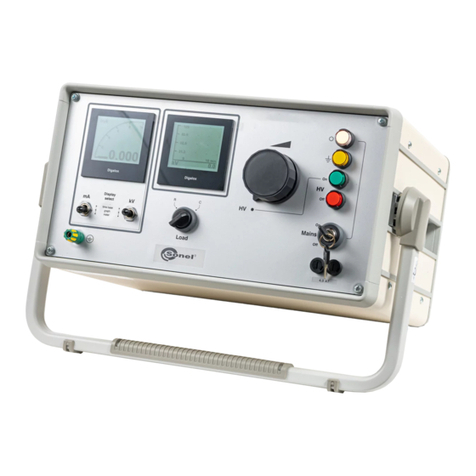
Sonel
Sonel S-50 DC User manual
